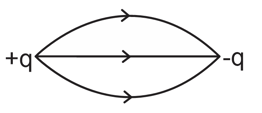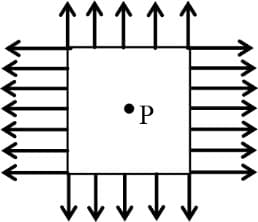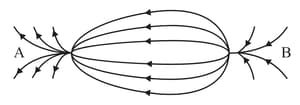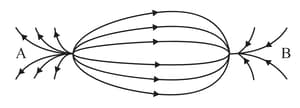Electric Lines of Force
Electric Lines of Force: Overview
From this topic, we will get information about electric lines of forces. We will also discuss the meaning of different electric lines of forces. Besides, we will discuss their properties through some diagrams.
Important Questions on Electric Lines of Force
When magnitude and direction of electric intensity are not the same at all the points in the electric field,then it is called a non-uniform electric field.
If the electric field is nonuniform, the force on each of the two poles of the dipole is not _____.
What happens if the electric field is non uniform?
Which of the following is true for the uniform electric field?
What is uniform electric field?
The statement "Electric field lines start from positive charge and end at negative charge" is
Some of the electric field lines of an electric dipole are given in figure. Select the correct statement from the following.

If an uncharged sphere of metal is placed in the uniform electric field produced by two large oppositely charged plates, then the lines of force will look like
Which of the following statements is not true about electric field lines?
Electric lines of force are as shown in the figure . Then potential at point

The spatial distribution of the electric field due to charges (A, B) is shown in figure. Which one of the following statements is correct?


An uncharged sphere of metal is placed inside a charged parallel plate capacitor. The lines of force will look like
A metallic shell has a point charge kept inside its cavity. Which one of the following diagrams correctly represents the electric lines of forces?
An electric field is given by The work done in moving a charge from to is
